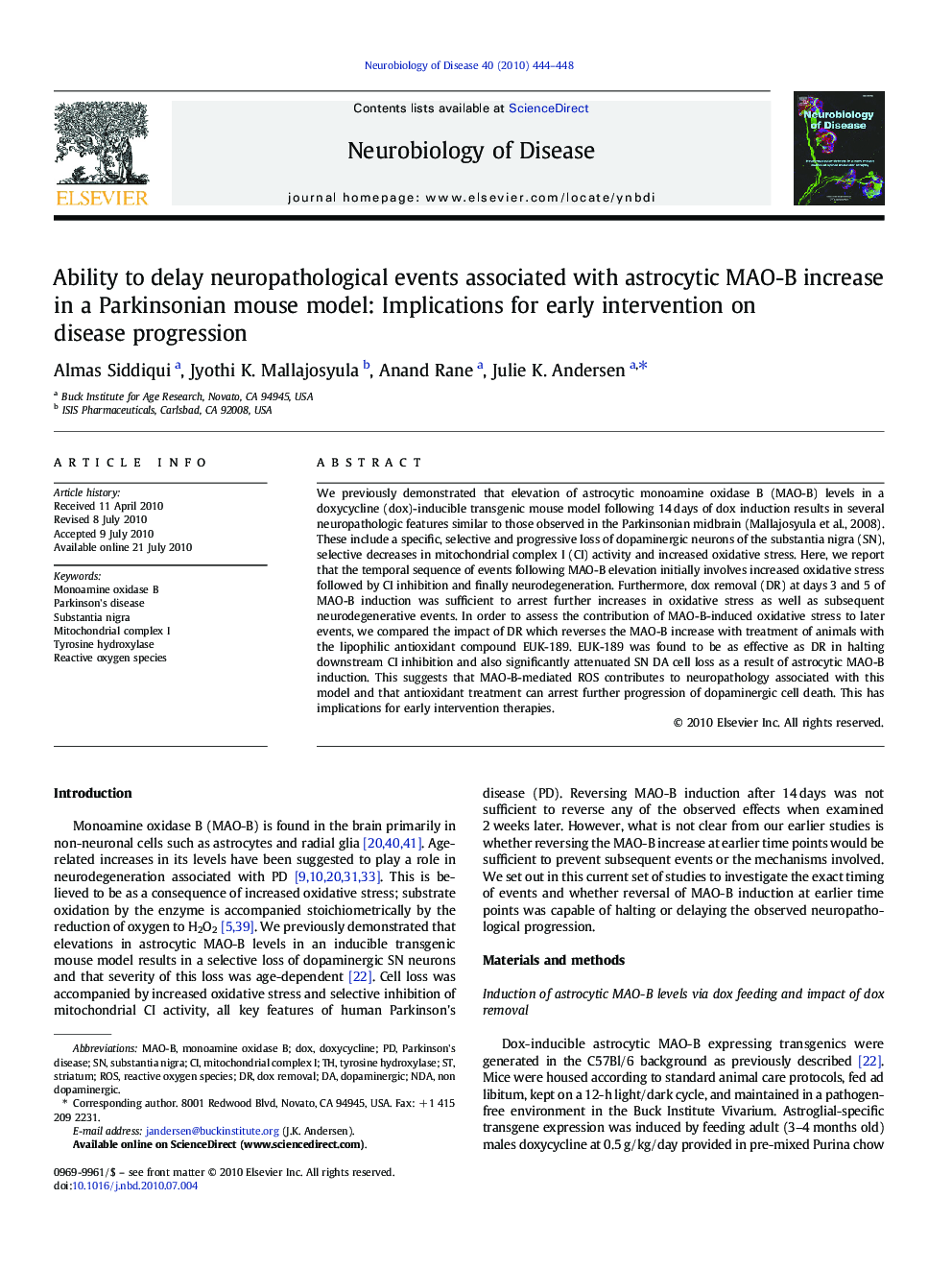| Article ID | Journal | Published Year | Pages | File Type |
|---|---|---|---|---|
| 3069779 | Neurobiology of Disease | 2010 | 5 Pages |
We previously demonstrated that elevation of astrocytic monoamine oxidase B (MAO-B) levels in a doxycycline (dox)-inducible transgenic mouse model following 14 days of dox induction results in several neuropathologic features similar to those observed in the Parkinsonian midbrain (Mallajosyula et al., 2008). These include a specific, selective and progressive loss of dopaminergic neurons of the substantia nigra (SN), selective decreases in mitochondrial complex I (CI) activity and increased oxidative stress. Here, we report that the temporal sequence of events following MAO-B elevation initially involves increased oxidative stress followed by CI inhibition and finally neurodegeneration. Furthermore, dox removal (DR) at days 3 and 5 of MAO-B induction was sufficient to arrest further increases in oxidative stress as well as subsequent neurodegenerative events. In order to assess the contribution of MAO-B-induced oxidative stress to later events, we compared the impact of DR which reverses the MAO-B increase with treatment of animals with the lipophilic antioxidant compound EUK-189. EUK-189 was found to be as effective as DR in halting downstream CI inhibition and also significantly attenuated SN DA cell loss as a result of astrocytic MAO-B induction. This suggests that MAO-B-mediated ROS contributes to neuropathology associated with this model and that antioxidant treatment can arrest further progression of dopaminergic cell death. This has implications for early intervention therapies.
Research highlights►Monoamine Oxidase-B mouse model serves as a novel tool to understand ROS mediated PD pathogenesis. ►Inducible expression of the MAO-B in-vivo allows us to study the exact timing of events. ►MAOB inhibitors and antioxidant drug therapies may be beneficial in preventing disease progression if given early.
